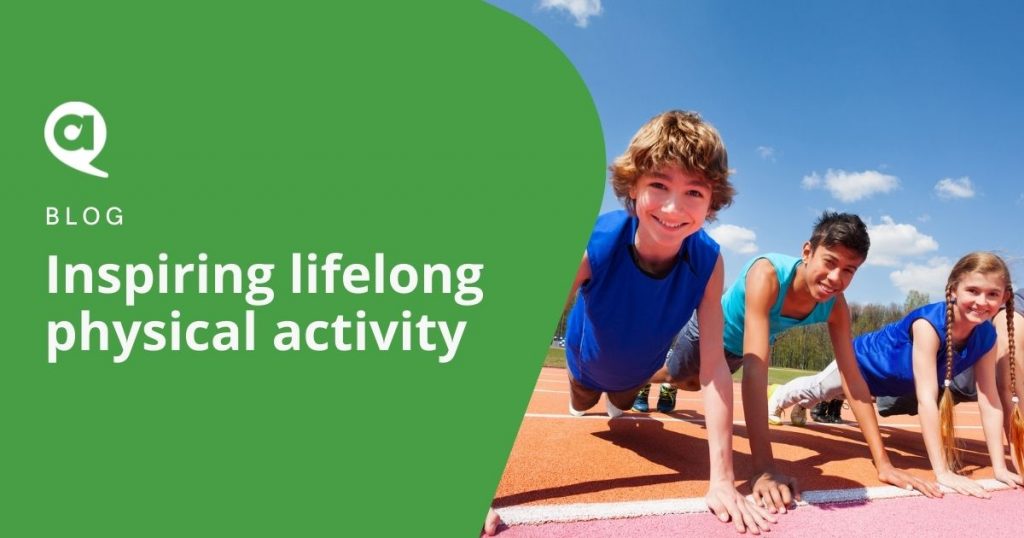
4 March 2022
by Clare Roden
ACHPER NSW
Professional Learning Officer
How do we motivate students to be engaged in lifelong physical activity?
In many ways, we are preaching to the converted when we say that PDHPE is one of the most important areas of the school curriculum. But do all of our students agree this is the case?
The PDHPE vision
A key aim of teaching PDHPE, as stated in the NSW K-10 PDHPE syllabus, is to enable students to develop the knowledge, understanding, skills, values and attitudes to lead active lives. This is a broad reaching statement which we often repeat in various forums. But have you sat down to think about:
- What are the explicit knowledge, understanding, skills and attitudes students need to lead active lives?
- How do the decisions you make when planning lessons influence the motivation levels of your students?
Many PDHPE programs aim to promote lifelong physical activity participation and
engagement as outcomes (Perlman, 2014). They state that they do so by developing physical education experiences that develop positive attitudes, motivation to be active, learn about physical activity and learn how to engage with others. Ask yourself:
- Are the learning activities you plan inclusive of all students?
- Do they support students to develop the attitudes and disposition to engage in physical activity now and into the future?
Self Determination Theory
Research suggests that PE teachers have the capacity to support student’s motivation by creating an environment where they:
- provide a meaningful rationale,
- give choice
- listen to students’ ideas
- acknowledge mastery and
- minimise directions (Lonsdale et al., 2019).
This research is grounded in Self Determination Theory (SDT). It’s concerned with how the social context a person is in such as a school or lesson can either support or thwart people thriving based on the satisfaction of their basic psychological needs of autonomy, competence and relatedness (Ryan & Deci, 2017).
Power and Goodnough (2019) suggest that optimal learning and growth only occurs when people’s basic psychological needs as defined in SDT are met.
PDHPE teachers should understand these basic psychological needs to help create a learning environment that allows for optimal learning for ALL students.
By gaining a better understanding of how to satisfy basic psychological needs there is a better chance of reducing the number of amotivated (low levels of motivation) students in your classroom by supporting intrinsic motivation.
Understanding the basic psychological needs of students
1.Autonomy
When looking to satisfy students’ need for autonomy, recognise that students have a desire for freedom of choice and would like to feel in control of what they are going to do in their PE lesson.
Offering genuine choice in who they participate with, what they enjoy participating in and the role they undertake (player, referee, coach) can make students feel more comfortable and more motivated to participate in lessons (White et al., 2021). This provision of choice also links into the basic psychological need of competence.
2. Competence
When it comes to competence there is individual competence and social competence. Individual competence relates to a person’s perception of how effective they feel in a situation and whether they have the opportunity to demonstrate their abilities (Power & Goodnough, 2019).
Within the context of a PE lesson, the idea of social competence is relevant when students measure themselves against other students. This can undermine perceived confidence and reduce motivation (White et al., 2021).
3.Relatedness
Perlman (2014) discusses relatedness as the sense of connectedness or comfort within a social setting. The social setting we operate in as PDHPE teachers is the learning environment we teach in. This need of relatedness can be supported by allowing students time to work together with the same group for an extended period of time so they understand their strengths and weaknesses, as well as what physical activity they enjoy engaging in (Perlman, 2014).
When planning movement lessons find a balance between:
- level of challenge and potential for success
- amount of choice and enough structure to keep students on task.
4 questions to ask
Reflect and consider the following questions:
- Do you provide genuine choice in how students engage in your lesson or is it limited to one or two specific sports?
- Are students offered choice in terms of the roles they undertake to show their level of achievement in relation to the outcomes?
- Do you consistently provide a wide variety of learning contexts for your students to participate in during physical education lessons?
- Have you considered the role of peers in creating motivated or amotivated students in your classroom? Does this influence the way you group students/set up the structure of your lesson?
Reimagining PE workshop
Keen to explore these ideas further? Our Reimagining PE workshop examines these questions and solutions. It will assist you to build your capacity to plan learning experiences that increase motivation and build autonomy and student engagement in PE lessons.
References
Lonsdale, C., Lester, A., Owen, K. B., White, R. L., Peralta, L., Kirwan, M., Diallo, T. M., Maeder, A. J., Bennie, A., & MacMillan, F. (2019). An internet-supported school physical activity intervention in low socioeconomic status communities: results from the Activity and Motivation in Physical Education (AMPED) cluster randomised controlled trial. British Journal of Sports Medicine, 53(6), 341-347.
Perlman, D. (2014). Motivating the Student: Sport Education Can Be a Framework for Success. Journal of physical education, recreation & dance, 85(6), 12-16. https://doi.org/10.1080/07303084.2014.926845
Power, K., & Goodnough, K. (2019). Fostering teachers’ autonomous motivation during professional learning: a self-determination theory perspective. Teaching Education, 30(3), 278-298. https://doi.org/10.1080/10476210.2018.1465035
Ryan, R. M., & Deci, E. L. (2017). Self-Determination Theory : Basic Psychological Needs in Motivation, Development, and Wellness. Guilford Publications. http://ebookcentral.proquest.com/lib/uow/detail.action?docID=4773318
White, R. L., Bennie, A., Vasconcellos, D., Cinelli, R., Hilland, T., Owen, K. B., & Lonsdale, C. (2021). Self-determination theory in physical education: A systematic review of qualitative studies. Teaching and Teacher Education, 99. https://doi.org/10.1016/j.tate.2020.103247


